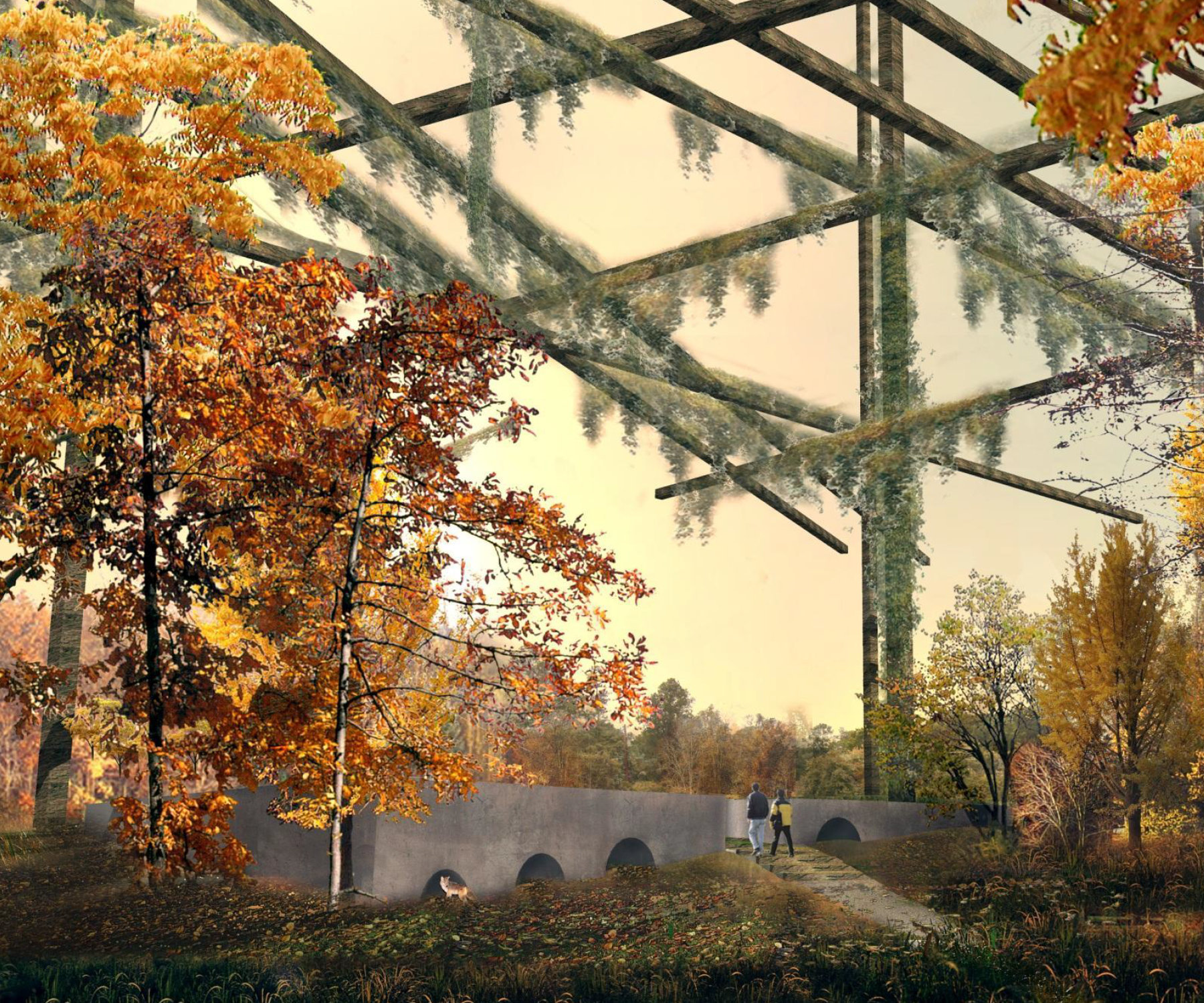




ARTWEB ALABAMA II
Boundaries are significant in the establishment of cultural formations about what belongs to a place and what does not belong; what is natural to a region and what is not; what is foreign and what is not.
The City of Auburn, Alabama, like many others, has its fair share of issues to do with indigeneity, naturalness and exoticism. As always, the negotiation of these issues, particularly in public space, leads quickly into the more obviously value-laden concepts of place, identity, purity and contamination.
Humans and coyotes have a long record of interaction in Auburn, and now that they have become urbanized, coyotes inhabit the same places we do. They like to appropriate woodland terrain, and dig holes in the ground and in banks as lairs and to raise their litters in.
In this project, public space is a designed realm in which the assemblage of humans is made visible and vocal. Its a place where this collective is articulated. To do such a thing – to work inside the notion of naturescultures – the landscape architect needs to be tuned to the habitus of all the parties that make up the collective. The designer of collective terrains successfully articulates the assembly of species that inhabit them when she mixes these parties while retaining and enhancing their freedoms, enabling the formation of intricate attachments and affordances between and among species and elements through affective contact and interanimation.
The landscape architect who works for and with the republic of human and nonhuman naturecultures envisages life as a contingent process of growth and change - an open system of encounters where difficulty, transgression, ambivalence and difference are the motors of self-determination.